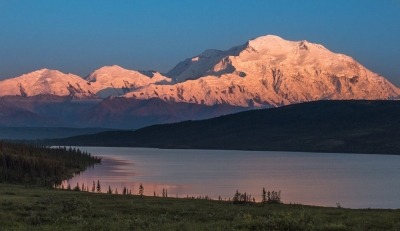Why is the Giant’s Causeway an amazing site to see?
 The Giant’s Causeway is an extensive area covering about 40,000 interlocking basalt columns. It is spread over six kilometres along the northern coast of Northern Ireland, on the edge of the Antrim plateau. These stone pillars with up to seven irregular sides that point out of the cliff are just a spectacular sight.
The Giant’s Causeway is an extensive area covering about 40,000 interlocking basalt columns. It is spread over six kilometres along the northern coast of Northern Ireland, on the edge of the Antrim plateau. These stone pillars with up to seven irregular sides that point out of the cliff are just a spectacular sight.This Causeway was formed some 50 million years ago as a result of a volcanic eruption that caused lava to flow towards the coast. When it came in contact with the sea, the lava cooled, forming layers of basalt columns. And because of the pressure between the columns, each of them sculpted into different shapes. Ever since it was first documented. in 1693, the Giant’s Causeway has been subjected to studies by geologists. It stands as a special place, not just for the formations but also for the grasslands close by. There were human settlements in the area during the 1800s, but it is now uninhabited. However, more than three lakh persons visit the site every year.
 Andalusia is a historical region of Spain, located in the southern portion of the country. It is an autonomous community which has the city of Sevilla as its capital.
Andalusia is a historical region of Spain, located in the southern portion of the country. It is an autonomous community which has the city of Sevilla as its capital. The Dolomites are a fascinating group of mountains that lie on the eastern section of the northern Italian Alps. It consists of a number of majestic peaks out of which 18 rise to more than 1000 feet. The Marmolada is the highest of all, at a height of 3341.8 metres.
The Dolomites are a fascinating group of mountains that lie on the eastern section of the northern Italian Alps. It consists of a number of majestic peaks out of which 18 rise to more than 1000 feet. The Marmolada is the highest of all, at a height of 3341.8 metres. Mont Blanc or Monte Bianco is the highest mountain in Europe. It is located in the Alps and lies along the border of France and Italy, extending to Switzerland. Ranked 11th in the world in topographic prominence, the mountain rises to a height of 4,808 metres above the sea level.
Mont Blanc or Monte Bianco is the highest mountain in Europe. It is located in the Alps and lies along the border of France and Italy, extending to Switzerland. Ranked 11th in the world in topographic prominence, the mountain rises to a height of 4,808 metres above the sea level.


 Tuscany is a region in west-central Italy that is marked for its landscapes, traditions, art and history. The city of Florence is its capital. Geographically, the region comprises the provinces of Massa-Carrara, Lucca, Pistoia, Prato, Firenze, Livorno, Pisa, Arezzo, Siena, and Grosseto.
Tuscany is a region in west-central Italy that is marked for its landscapes, traditions, art and history. The city of Florence is its capital. Geographically, the region comprises the provinces of Massa-Carrara, Lucca, Pistoia, Prato, Firenze, Livorno, Pisa, Arezzo, Siena, and Grosseto. Oaxaca or the Free and Sovereign State of Oaxaca are a state in southern Mexico. Specifically, it is one of the states that constitute the 32 federative entities of Mexico. What make the state so famous are its land, culture, and people.
Oaxaca or the Free and Sovereign State of Oaxaca are a state in southern Mexico. Specifically, it is one of the states that constitute the 32 federative entities of Mexico. What make the state so famous are its land, culture, and people. Tikal was a major city and ceremonial site of the Ancient Mayan civilization. It was also an urban centre in the southern Maya lowlands which stood 30 kilometres north of Lake Peten ltza. Today, this place is in the archaeological region of Peten in northern Guatemala.
Tikal was a major city and ceremonial site of the Ancient Mayan civilization. It was also an urban centre in the southern Maya lowlands which stood 30 kilometres north of Lake Peten ltza. Today, this place is in the archaeological region of Peten in northern Guatemala.

 Denali is the highest mountain peak in North America that is located close to the centre of the Alaska Range in South-Central Alaska.
Denali is the highest mountain peak in North America that is located close to the centre of the Alaska Range in South-Central Alaska. The Katmai National Park and Preserve is an area in southwestern Alaska, US, most noted for its wilderness and distinctive geologic features.
The Katmai National Park and Preserve is an area in southwestern Alaska, US, most noted for its wilderness and distinctive geologic features.

 The Oneonta Gorge is a gorge located in the Columbia River Gorge area of the Oregon state. A gorge, as some of you might know, is a narrow valley with steep walls lying between hills or mountains.
The Oneonta Gorge is a gorge located in the Columbia River Gorge area of the Oregon state. A gorge, as some of you might know, is a narrow valley with steep walls lying between hills or mountains. The Big Sur is a scenic region in Western California, US that comprises a 160 kilometre long stretch of sea coast along the Pacific Ocean.
The Big Sur is a scenic region in Western California, US that comprises a 160 kilometre long stretch of sea coast along the Pacific Ocean.